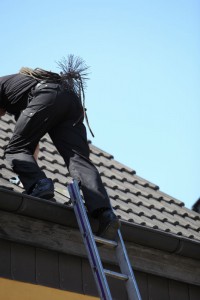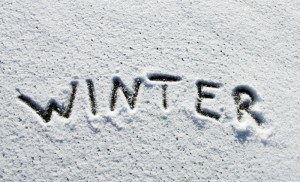Schedule a Chimney Inspection to Catch Winter Masonry Problems
The cold months of winter are often the heaviest use periods for fireplaces. Unfortunately, this time of heavy use also coincides with the time that chimneys are most likely to get damaged.
The combination of rain, ice, sleet, snow, and frigid temperatures can wreak havoc on chimney systems. However, this damage often goes unnoticed until the spring or summer as many homeowners believe they should not or do not need to have their chimneys inspected during the cold months of winter.
To ensure that your chimney system makes it through the winter undamaged, schedule a winter chimney inspection now. An inspection now may help you identify minor damage before it turns into a major issue.
How can winter weather affect my masonry?
While all water can be detrimental to the masonry of chimneys, it can have catastrophic effects when combined with winter weather conditions. Bricks and mortar are naturally porous, meaning they absorb small amounts of water. As this moisture freezes it expands, creating larger and larger cracks and gaps. As the frozen water melts, more water is able to enter the brick. The process of deterioration is called the freeze thaw cycle, and can cause extensive damage to masonry in as little as one winter season. Previously damaged brick is especially susceptible to the freeze thaw cycle.
When should I have a chimney inspection?
The purpose of a chimney inspection is to evaluate the overall health of your fireplace and chimney system. Certified technicians will look for signs of damage to the bricks, mortar, damper, flue, and other parts of the chimney and fireplace structure.
Chimney inspections are often performed as a routine part of a chimney sweep or cleaning. They can also be used as a way to pinpoint the cause of ongoing chimney issues such as strong odors or recurring leaks. Likewise, it is recommended that homeowners have a chimney inspection done after purchasing a new home to establish a baseline for their chimney’s condition.
What is done during a chimney inspection?
The National Fire Protection Association created nationwide standards for chimney inspections in 2000, designating the criteria for three levels of inspections.The level of inspection performed will depend on the condition of your chimney system, whether it has been damaged, or if any parts have been modified or replaced.
If you are not experiencing any significant fireplace issues, your chimney has not been damaged, or you have not had any parts replaced you will most likely receive a Level I chimney inspection. During this level of inspection, certified technicians will evaluate all accessible portions of the interior and exterior of the chimney and fireplace including the masonry, firebox, damper, and flue.
If you are experiencing ongoing issues such as a leak or fireplace odor, your chimney or fireplace has been damaged, or problems are discovered during the Level I chimney inspection, a more in depth Level II or Level III inspection may be recommended.
Why are chimney inspections important?
“A chimney inspection is like an annual dental check-up,” says Ashley Eldridge, Director of Education for the CSIA. “It’s preventative maintenance that helps minimize potential hazards.”
An annual chimney inspection, especially when performed during the winter, is a great way to ensure the overall safety and stability of your chimney system. Contact Jack Pixley Sweeps today to schedule your chimney inspection so you can enjoy your fireplace with peace of mind for the rest of the year.


